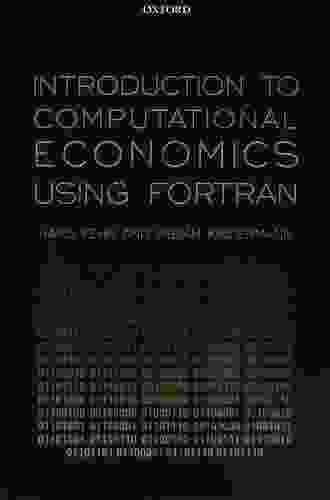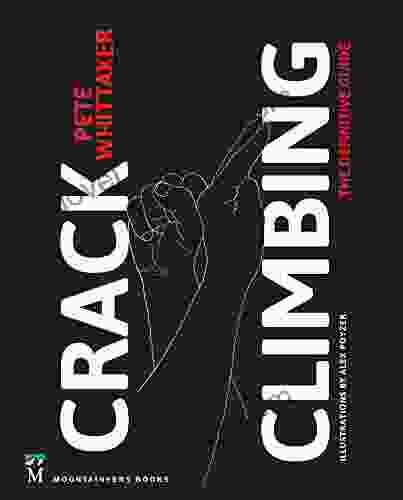Dive into Computational Economics with Fortran: A Comprehensive Guide for Economists

Are you an economist seeking to harness the power of computation to advance your research and analysis? Look no further than " to Computational Economics Using Fortran," a comprehensive guide that empowers you to explore the fascinating intersection of economics and computer science.
What is Computational Economics?
Computational economics marries economic theory with computational methods, enabling economists to solve complex economic models, analyze vast datasets, and simulate dynamic economic systems. By embracing computational tools, you can delve deeper into economic phenomena, test hypotheses more rigorously, and gain a more comprehensive understanding of economic behavior.
4.6 out of 5
| Language | : | English |
| File size | : | 17583 KB |
| Text-to-Speech | : | Enabled |
| Screen Reader | : | Supported |
| Enhanced typesetting | : | Enabled |
| Print length | : | 585 pages |
| Lending | : | Enabled |
| X-Ray for textbooks | : | Enabled |
Benefits of Using Fortran for Computational Economics
Fortran, a high-performance programming language, stands as an ideal choice for computational economics. Its strengths lie in:
- Performance: Fortran is renowned for its exceptional execution speed, making it perfect for solving computationally intensive economic models.
- Scalability: Fortran programs can efficiently handle large datasets and complex simulations, enabling you to tackle real-world economic problems.
- Portability: Fortran code is highly portable across different operating systems and hardware platforms, ensuring your programs run seamlessly on various computational environments.
Features of " to Computational Economics Using Fortran"
This comprehensive guide covers all the essential elements of computational economics using Fortran, empowering you with a solid foundation. Key features include:
- In-depth to Fortran: Acquire a thorough understanding of Fortran, including its syntax, data types, control structures, and numerical methods.
- Economic Applications: Explore real-world economic applications of Fortran, such as macroeconomic modeling, optimization, and simulation.
- Hands-on Exercises: Engage in practical exercises that reinforce your understanding of the concepts and techniques presented.
- Comprehensive Coverage: Gain insights into a wide range of topics, including linear algebra, numerical integration, and optimization algorithms.
Target Audience
This book is meticulously crafted for:
- Economists seeking to leverage computational methods in their research and analysis
- Students pursuing graduate-level courses in computational economics
- Professionals in finance, data science, and policy analysis who wish to expand their computational skills
Why Choose " to Computational Economics Using Fortran"?
By choosing this guide, you embark on a transformative journey in computational economics. You will:
- Empower your research: Enhance your ability to solve complex economic models and analyze vast datasets, leading to groundbreaking insights.
- Stay competitive: Equip yourself with the computational skills highly sought after in academia, industry, and government.
- Expand your career opportunities: Open doors to exciting career paths in computational economics, data science, and financial modeling.
Investment in Knowledge
Investing in " to Computational Economics Using Fortran" is an investment in your future. This comprehensive guide unlocks the power of computational economics, empowering you to tackle complex economic problems with confidence and precision.
Call to Action
Embark on your computational economics journey today. Free Download your copy of " to Computational Economics Using Fortran" and unlock the transformative potential of data-driven economic analysis.
Testimonials
"A must-have for economists seeking to harness the power of computation. This book provides a clear and comprehensive to Fortran, making it accessible for both beginners and experienced economists."
- Dr. Mark Harrison, Professor of Economics, University of California, Berkeley
"An invaluable resource for students and professionals alike. The hands-on exercises and real-world applications make this book an indispensable guide to computational economics."
- Ms. Emily Chen, Data Scientist, Goldman Sachs
"Highly recommended. This book empowers economists to leverage the latest computational tools, enabling them to make significant contributions to the field."
- Dr. David Smith, Chief Economist, International Monetary Fund
4.6 out of 5
| Language | : | English |
| File size | : | 17583 KB |
| Text-to-Speech | : | Enabled |
| Screen Reader | : | Supported |
| Enhanced typesetting | : | Enabled |
| Print length | : | 585 pages |
| Lending | : | Enabled |
| X-Ray for textbooks | : | Enabled |
Do you want to contribute by writing guest posts on this blog?
Please contact us and send us a resume of previous articles that you have written.
 Book
Book Novel
Novel Page
Page Chapter
Chapter Text
Text Story
Story Genre
Genre Reader
Reader Library
Library Paperback
Paperback E-book
E-book Magazine
Magazine Newspaper
Newspaper Paragraph
Paragraph Sentence
Sentence Bookmark
Bookmark Shelf
Shelf Glossary
Glossary Bibliography
Bibliography Foreword
Foreword Preface
Preface Synopsis
Synopsis Annotation
Annotation Footnote
Footnote Manuscript
Manuscript Scroll
Scroll Codex
Codex Tome
Tome Bestseller
Bestseller Classics
Classics Library card
Library card Narrative
Narrative Biography
Biography Autobiography
Autobiography Memoir
Memoir Reference
Reference Encyclopedia
Encyclopedia Richard Antoine White
Richard Antoine White Kelly Jensen
Kelly Jensen Tim Maudlin
Tim Maudlin Reed Albergotti
Reed Albergotti Philip Beuth
Philip Beuth Tracy Newman
Tracy Newman Robbie Quinn
Robbie Quinn Rebecca Buxton
Rebecca Buxton Sophia Rolle
Sophia Rolle Todd Davis
Todd Davis Rachel Aaron
Rachel Aaron Rob Decina
Rob Decina Rowan Ellis
Rowan Ellis Phil Porter
Phil Porter Reid Oslin
Reid Oslin Robert S Witte
Robert S Witte Robert M Smith
Robert M Smith Robin Cormack
Robin Cormack Ruth Bell Graham
Ruth Bell Graham Suzanne Buchan
Suzanne Buchan
Light bulbAdvertise smarter! Our strategic ad space ensures maximum exposure. Reserve your spot today!

 Cameron ReedThe Life and Times of an American Patriot: A Tapestry of Courage, Dedication,...
Cameron ReedThe Life and Times of an American Patriot: A Tapestry of Courage, Dedication,... Italo CalvinoFollow ·12.8k
Italo CalvinoFollow ·12.8k Fabian MitchellFollow ·8k
Fabian MitchellFollow ·8k Clarence MitchellFollow ·9k
Clarence MitchellFollow ·9k Zadie SmithFollow ·11.9k
Zadie SmithFollow ·11.9k Gil TurnerFollow ·4.6k
Gil TurnerFollow ·4.6k Brayden ReedFollow ·10.7k
Brayden ReedFollow ·10.7k Garrett PowellFollow ·19.4k
Garrett PowellFollow ·19.4k Edwin CoxFollow ·10.2k
Edwin CoxFollow ·10.2k

 Mike Hayes
Mike HayesArthur Meighen: A Life in Politics
Arthur Meighen was one of Canada's most...

 Bryan Gray
Bryan GrayVindicated: Atlanta's Finest
In the heart of Atlanta, a...

 Houston Powell
Houston PowellHis to Defend: A Captivating Legal Thriller That Will...
An Unforgettable...

 John Green
John GreenUncover the Riveting Tale of "Hunted: Atlanta Finest" - A...
Prepare yourself for a...
4.6 out of 5
| Language | : | English |
| File size | : | 17583 KB |
| Text-to-Speech | : | Enabled |
| Screen Reader | : | Supported |
| Enhanced typesetting | : | Enabled |
| Print length | : | 585 pages |
| Lending | : | Enabled |
| X-Ray for textbooks | : | Enabled |














